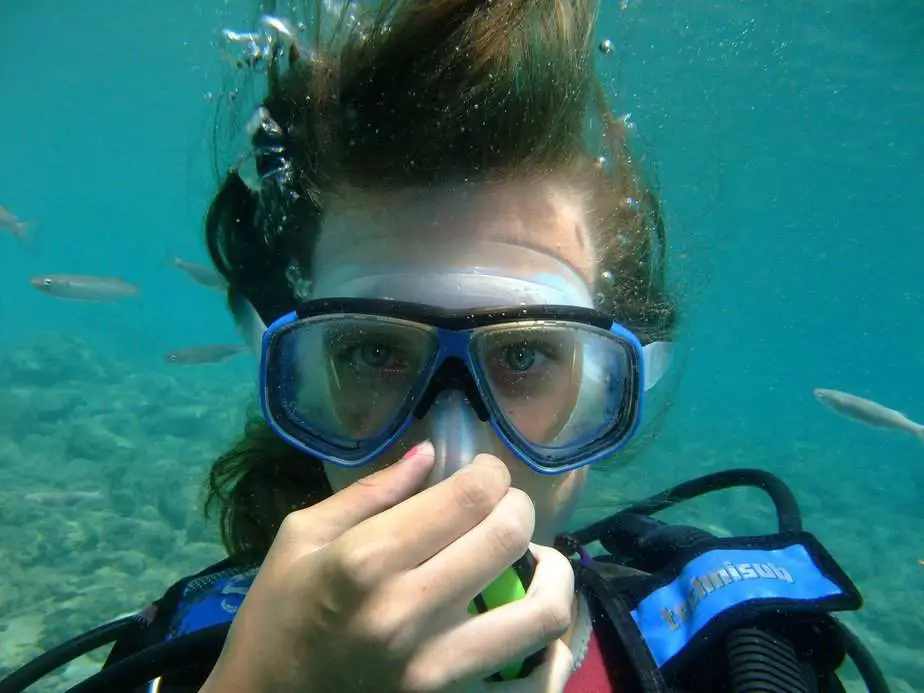The term “mouth breather” is often used as an insult. It implies that breathing through the nose is normal, and breathing from the mouth is unusual enough to be worth insulting. Maybe you were taught to breathe through your nose from a young age and it has since been ingrained into your habits. To be fair, nose breathing filters out more dust and pollution making it generally a better choice, however there are some moments when mouth breathing is the preferred option.
When scuba diving, unless you are wearing a full face dive mask, you cannot breathe through your nose while underwater. A scuba diving mask seals over your eyes and your nose as well. Most scuba diving setups rely on breathing through the mouth using a regulator. Even though you cannot inhale from your nose while diving, you should occasionally exhale from it to equalize the mask pressure and prevent mask squeeze.
In this article, we’ll go over why regular scuba diving setups don’t allow you to breathe through your nose. We’ll give tips on how you can learn to breathe comfortably underwater with your mouth. Lastly, we’ll briefly discuss some equipment that allows you to breathe from your nose, though it’s more expensive and requires more training.
How does one breathe underwater while scuba diving?
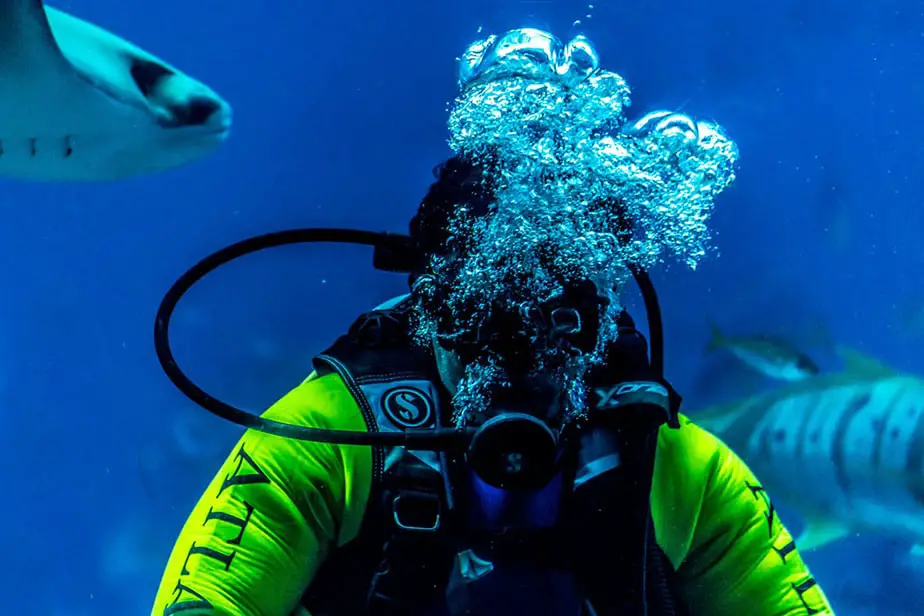
Most people know that scuba divers have a tank strapped to their back with air in it and that somehow the air reaches the diver’s lungs. They don’t stop to think, wait a minute, divers don’t breathe through their nose?
Even people training to become scuba divers and are taught to breathe through their mouths find their first dives to be uncomfortable. Chances are, they are going against decades of conditioning and forcing themselves to manually breathe through their mouth. They may instinctively try to breathe from the nose only to find that they can’t. They also have to get used to bubbles coming out of the regulator.
Divers need to de-condition themselves to start breathing with their mouth instead of their nose. Furthermore, divers must remember to breathe normally, continuously, and to never hold their breath.
Breathing in and out deeply ensures there is full gas exchange through the lungs. Rapid breathing wastes a lot of oxygen and can result in lightheadedness and loss of consciousness.
How does the scuba regulator work?
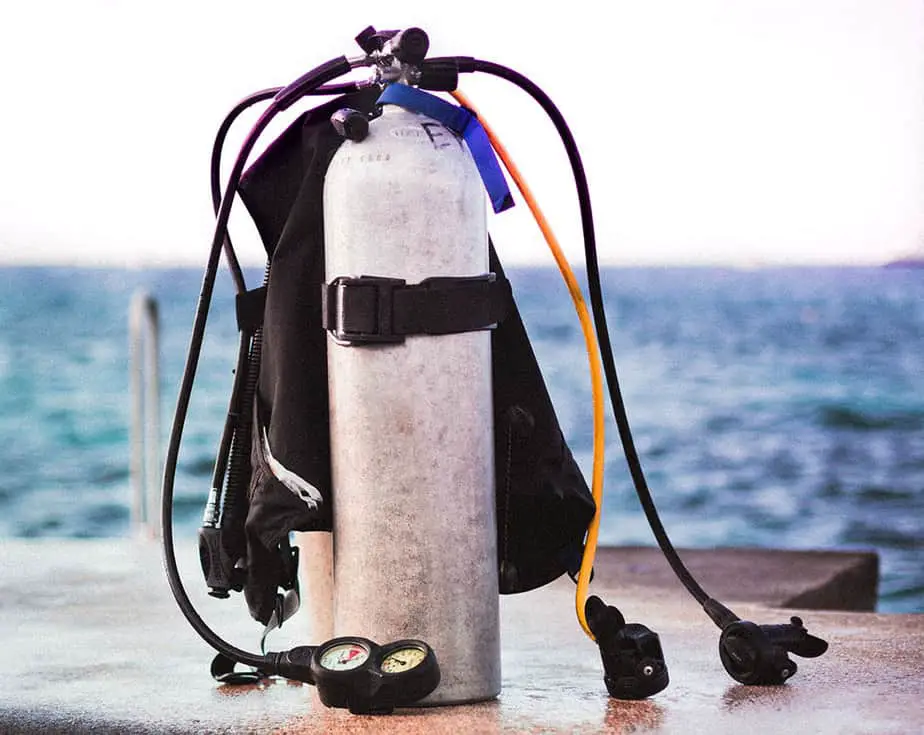
In layman’s terms, a regulator’s function is to convert the high pressure breathing gas in the scuba cylinder to an ambient pressure that is safe for a human to breathe through their mouth. There are various components to a scuba regulator, and the pressure reduction is done in two stages.
The first stage of the regulator is a valve that attaches to the tank valve outlet. It opens and closes so that air can flow through. The default position is shut tight, but it opens whenever the diver inhales. The first stage is responsible for decreasing the pressure in the tank down to intermediate pressure (10 bar or 150 psi).
Most modern regulators are what’s known as “balanced” regulators, meaning they ensure that each breath you take is easy whether the tank is full or nearly empty.
Next, the second stage of a regulator is typically what people imagine is the regulator. It’s the part that divers place into their mouth and where they can breathe from. In a proper regulator setup, there should be two second stages: the primary second stage (for the diver) and an alternate second stage (a.k.a. the octopus, used as a backup).
The second stage is what reduces the intermediate pressure into ambient pressure (equal to the pressure at the current depth) so that you can safely breathe it. The mouthpiece of the second stage should be bitten gently and held in place with your teeth.
Under normal circumstances, the second stage should keep water from entering your mouth so you don’t choke. The regulator should ideally be kept in one’s mouth for the duration of the dive.
This is how a typical scuba regulator works in a nutshell. As you can see, it is designed to fit in a diver’s mouth, not their nose. If you want the choice of breathing through your nose, then you’d need to use a full face dive mask which we discuss in another section.
Why can’t we breathe through our nose for scuba diving?
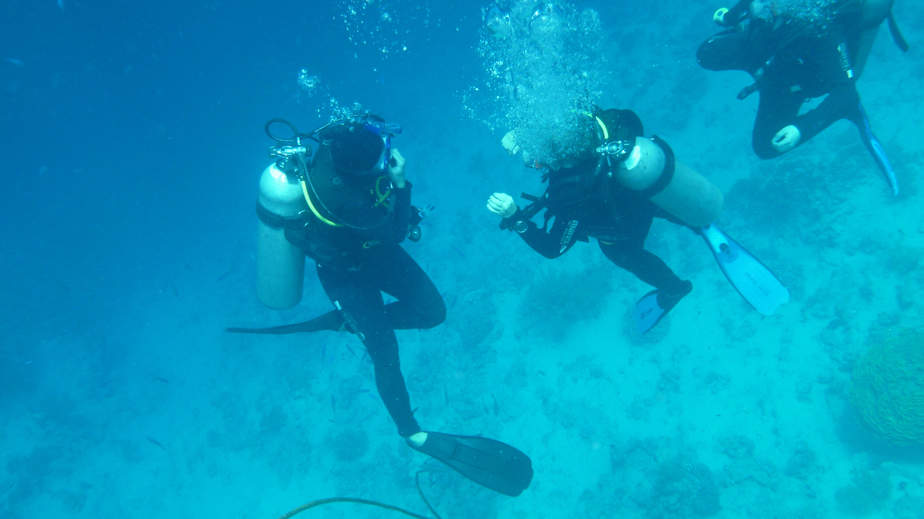
The reason is because the nose is enclosed within the dive mask along with your eyes. The mask should seal tightly against your face, forming a watertight and also airtight seal. Since no fresh air is reaching the mask, inhaling from the nose provides no benefit.
Around the nose is a flexible pocket that divers can use their fingers to squeeze their nose. While pinching the nose, divers should gently exhale which should equalize the ear pressure. Divers must also remember to equalize the mask itself by exhaling from the nose every once in a while.
However, these reasons only explain the how, they don’t explain why scuba dive masks are designed this way. The primary reason has to do with mask clearance. No mask seal is perfect; it is expected that at some point, water will begin to seep into the mask. This is no cause for concern, as mask clearance is one of the first things a dive instructor will teach you in the Open Water Diver course.
To clear the mask, divers need to gently lift the mask from the bottom while holding the top in place with their finger, take a deep breath from the regulator, and continuously exhale through their nose, forcing the water out of the mask. This method is so effective that divers can even let some water into the mask until it clears the lenses of fog, and then force all of it out for a “clean slate” so to speak.
This design ensures that at no point does the diver lose access to their air supply while clearing their mask. Having the eyes and nose share the same airtight space also poses some problems, namely mask squeeze.
When descending to a deeper depth, the water pressure increases which causes the air to get compressed. This can cause a painful squeeze in the ears and mask unless it’s equalized. If you fail to equalize, you can easily get ear and facial barotrauma. We’ve already discussed how to equalize both the mask and ears, so we won’t repeat it again.
How to stop breathing from your nose?
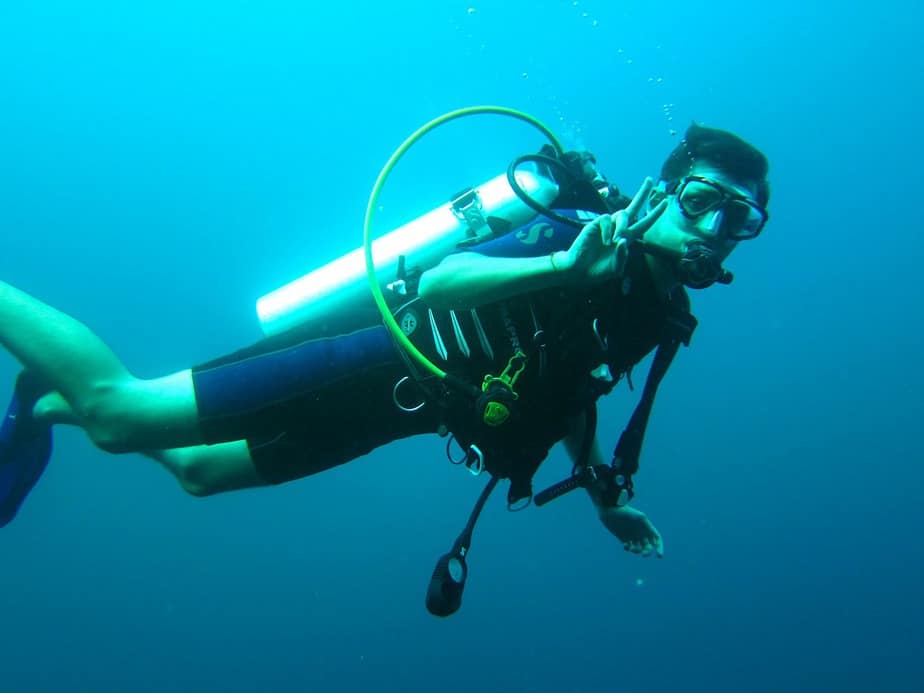
When you do something for so long that it becomes automatic, it is challenging to break the habit in a short period of time. Many new divers’ first few dives were unenjoyable because they kept trying to breathe from their nose and getting a mini panic attack when no air entered their lungs.
In order to stop breathing from your nose, you need to decondition yourself and build up a new habit: mouth breathing. There are various ways you can train yourself to establish a new habit which can help you while scuba diving.
The first thing you can do is to try wearing the mask on land. Without the stress of being miles away from land and underwater, you can hopefully feel more at ease as you practice mouth breathing. Since you want this process to become automatic, why don’t you try watching TV or doing some activity around the house to take your mind off your mouth breathing. Do it long enough and mouth breathing will become automatic.
The next level is to actually try this in the water. We’re going to focus on exhaling from your mouth underwater. This will help you get used to the sensation of exhaling underwater and seeing all of the bubbles come out.
Stand in shallow pool water with your hand on the edge of the pool for safety. Put your dive mask on, take a deep breath, and submerge your face underwater. Gently exhale from your mouth slowly for just one breath. Lift your face out of the water and inhale slowly and deeply before submerging and exhaling slowly and deeply underwater. Do this until you feel comfortable exhaling underwater.
Now we are going to practice inhaling and exhaling deeply underwater with the help of a snorkel. With a snorkel, you can very closely simulate what it’s like breathing with a scuba regulator without actually filling up a scuba tank just for practice. Keep practicing breathing through the snorkel until you’ve gotten so used to inhaling and exhaling from your mouth instead of your nose.
At some point, you’re going to have to do it for real. Nothing beats genuine experience, however these exercises are intended to help you build up the confidence and conditioning to breathe underwater with your mouth.
Can I scuba dive with swimming goggles?
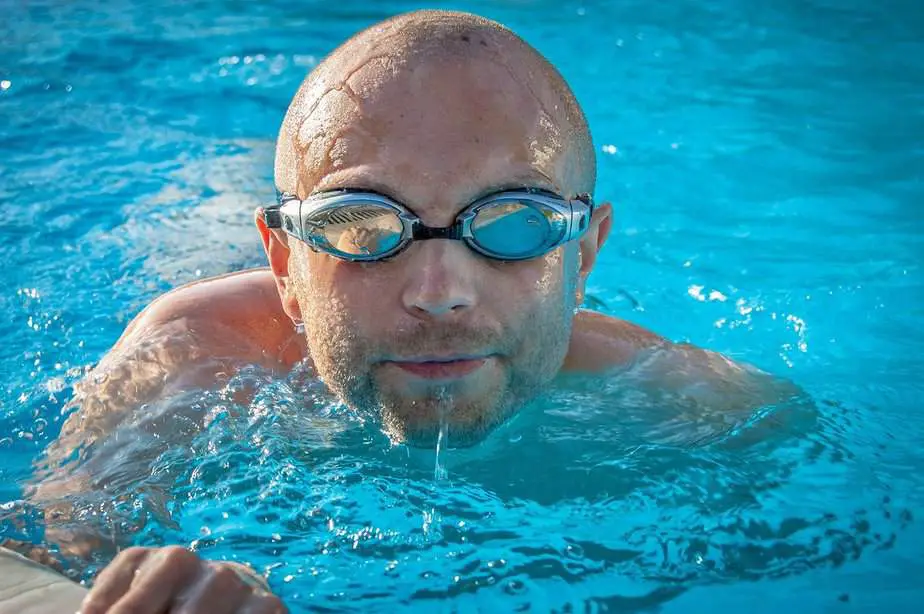
It is not a good idea to scuba dive or even snorkel with swim goggles. I understand that you may have perfectly usable swimming goggles laying around the house somewhere that you don’t want to go to waste. Or maybe you just don’t like the dive mask design and want to wear goggles instead.
Unfortunately, if the nose isn’t inside the mask/goggle’s air space, then you will not be able to equalize the pressure and will experience painful mask squeeze. The small amount of air inside the goggles will be compressed quickly. The effect is that the goggles will vacuum so tightly against your eyes that it can cause your eyes to go bloodshot. It’s not a good look, unless it’s halloween.
Do not scuba dive with swimming goggles. Even skin divers should not wear swim goggles. There’s a reason why swimming pools specifically tell you not to dive. It’s not just to decrease the risk of drowning, it’s so that you don’t experience mask squeeze.
Can I exhale from my nose?
While you may not be able to breathe in through your nose while scuba diving, you can certainly breathe out. In fact, it’s essential that you do so occasionally to equalize the air inside the mask. Check the video above for an example of what happens when you don’t exhale from the nose .
Some people find this confusing – are they supposed to breathe in with their mouth and then exhale through their nose or mouth? The answer is – exhale through your mouth most of the time, but when you feel the pressure increasing in your mask, then exhale through your nose to equalize it.
If you try to exhale through your nose each time, it can feel challenging because you are forcing air out of your mask which requires some effort. This can potentially result in some mask problems because some of the air will exit from the mask, breaking the watertight seal and possibly letting some water in each time.
Furthermore, since the air from inside your body is warm and moist, exhaling too much from your nose can cause your mask to fog up. In general, you should only exhale from your nose while descending to equalize the pressure, and then once you reach the planned depth, switch to only inhaling and exhaling from only your mouth.
Are there dive masks that allow nose breathing?
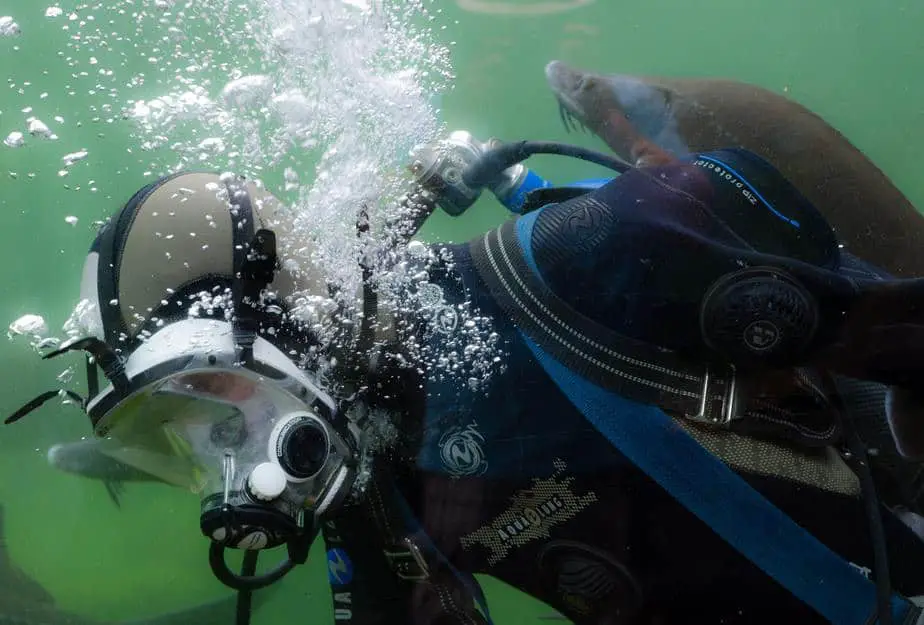
Yes, there are full-face scuba masks that let divers breathe from their mouth and nose if they want to. In a full face scuba dive mask, the second stage regulator is built into the mask itself. The mask covers your eyes, nose, and mouth and your mouth and nose share the same space to breathe from.
Since the regulator is built into the mask and not jammed into your mouth, full face dive masks may allow divers to communicate underwater by speaking instead of using hand signals. There will be a built-in microphone and speaker so the diver and support team at the surface can radio each other.
Typically full-face dive masks are used by commercial divers or emergency services. There are consumer-grade versions, however they are not as durable. Many recreational divers find that full face masks are heavy and cumbersome as well. Not to mention full face mask diving requires additional training in order to safely use them, which is yet another cost.
Thus, full face masks are not for beginners, though if you put in the time to learn how to use them, then even recreational scuba divers can use them.
Lastly, divers wearing a full face mask must also be competent at using a regular mask and regulator in case their full face mask malfunctions or there is some other emergency underwater.
Parting words
Since standard scuba diving masks are designed such that the nose does not share the same space as the mouth, then the nose is cut off from the regulator and therefore it has no access to fresh air. Thus, you can’t breathe through your nose when scuba diving except to equalize the mask.
Although full face scuba diving masks exist, they are expensive and require additional training in order to use them (which adds to the expense). The average diver would rather just stick with the traditional scuba mask and regulator setup.
It’s easy to train yourself to get used to breathing in and out with your mouth. There may be an adjustment period for new divers, but it’s really easy to get into the habit of mouth breathing. Just make sure to breathe through your nose again once you’re back on land.

